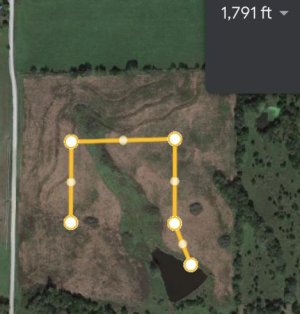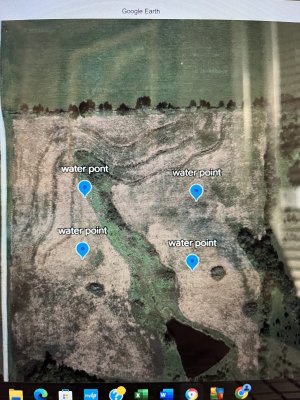judd-e
Member
My project is 4 water points as shown in first attachment. the second and third attachment
are two options of how to connect the points with the water line. NRCS plans are the pic where
the lines sort of meet in the middle. My method would be to do more straight lines from point to point
I feel less connections underground would be better. Am I missing anything? this will be pump fed
via solar pump and pressure tank. 1.25 inch PE pipe buried 36 to 40 inches if that matters.
thanks
are two options of how to connect the points with the water line. NRCS plans are the pic where
the lines sort of meet in the middle. My method would be to do more straight lines from point to point
I feel less connections underground would be better. Am I missing anything? this will be pump fed
via solar pump and pressure tank. 1.25 inch PE pipe buried 36 to 40 inches if that matters.
thanks






